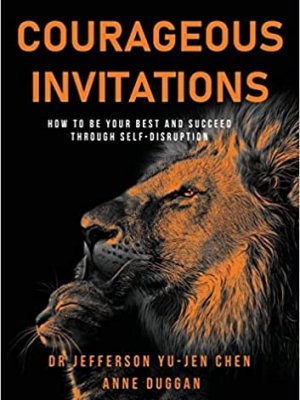Confidence Man
The Making of Donald Trump and the Breaking of America
Maggie Haberman
HarperCollins UK – R430
Yes, he’s running again and, yes, he stands a very good chance not only of winning the Republican Party’s nomination but also regaining the White House. I refer, of course, to Donald J. Trump, who has most definitely not faded into richly deserved obscurity.
We need, therefore, to pay attention, unlike in 2016 when the prospect of a Trump presidency seemed beyond mortal comprehension. Where better to start than with Maggie Haberman’s remarkable biography of Trump, Confidence Man. This is by no means the first biography of Trump, nor account of his years at 1600 Pennsylvania Avenue, but it may well be the most thorough and insightful.
Pulitzer Prize-winning Haberman is a White House correspondent for The New York Times and a political analyst for CNN – she is also someone who has been criticised for being too close to Trump. Don’t let that deter you. Haberman is up-close-and-personal with Trump, having interviewed him no less than three times for this book after he left the White House, but this is a hard-headed examination of a deeply flawed, highly narcissistic personality.
Her skill as both reporter and writer shines through. She uses an extremely wide range of sources, including nearly all of the main characters involved with the Trump presidency, but does so in a way that allows the narrative to flow briskly and easily. When Confidence Man landed on my desk, my heart sank. No, I thought, not another Trump book! But I was wrong: Haberman had me hooked firmly and early and I read it nearly at a single sitting.
You should do the same. Trump has extreme views on Africa, including South Africa, and a second spell as Potus could spell disaster for this country.
Freezing Order
Bill Browder
Simon & Schuster UK – R260
Bill Browder is the American financier who spotted a big opportunity in Russia after the fall of the Soviet Union, setting up that country’s largest investment fund. As he did so, he realised that a network of corrupt oligarchs, centred on Vladimir Putin, were stealing Russia blind. His attempts to expose them led to Putin ordering his expulsion from Russia in 2005.
In 2007, a group of law enforcement officials raided his Moscow office and stole $230 million. His principled young tax attorney, Sergei Magnitsky, testified against the officers but, after being arrested and held in pre-trial detention, was beaten to death in jail in 2009.
Browder vowed revenge and this story is told in his first book, Red Notice. America passed the first Magnitsky Act in 2012, allowing the government to sanction foreign officials who have been involved in human rights abuses. It has since been expanded and a number of other countries have followed suit.
Freezing Order is Browder’s account of what happened next. It begins with his arrest in Spain at the behest of the Russians, who will stop at nothing to try and seize him. I won’t tell you what happens but suffice it to say that the bulk of the book deals with the search for the missing $230 million. There is some fascinating cyber-detective work, encounters with deeply shady characters and a landscape that shifts back and forth from the US to Europe to Russia at breakneck speed.
The shadow of Vladimir Putin falls over nearly everything Browder describes until the revelation, towards the end of Freezing Order, of the massive flows of money laundered through a Danish bank. Browder contends that this is just the tip of the iceberg, and he suggests – spoiler alert! – that this is the real reason why Putin needs the war in Ukraine. As a guide to international money-laundering, high finance and current geopolitics, Freezing Order reads like a spy thriller. But never forget that this is a real-life, true story.
Chip War
The Fight for the World’s Most Critical Technology
Chris Miller
Simon & Schuster UK – R380
This is a curious but ultimately extremely worthwhile offering from Miller, who is an associate professor of international history at Tufts University in America. It is, partly, a history of the computer chip from the end of World War II to the present day. That’s been done before by several authors and takes us from the birth of the semiconductor and Bill Shockley, through Fairchild Semiconductor, Bob Noyce, Gordon Moore and Andy Grove, to Texas Instruments (TI), Intel, AMD and Britain’s Arm.
Along the way we also learn of Russia’s failed attempts to build a chip industry – “Copy the Americans! Exactly!” – and those of China, which are still a work in progress. We also encounter Morris Chang, once of TI, but far more notable as the man tapped by the Taiwanese government to start the Taiwan Semiconductor Manufacturing Company (TSMC).
All very interesting, but why is it important? At the heart of the modern computer chip industry is Moore’s Law. In 1965, Fairchild’s Moore noticed that the number of transistors that could fit on each chip was doubling annually, as engineers learned to fabricate ever smaller transistors. He realised that this opened the door to the possibility of exponential growth. Fast forward to 2020, when Miller reminds us that the Apple iPhone 12 was powered by a chip “with 11.8 billion tiny transistors carved into its silicon”. That’s what happens when “exponential” and “tinier” happen every two years for more than 50 years!
But each doubling of processor power carries with it astronomical costs and as a result the industry consolidates and consolidates. The result: there is now only one company on earth that can make 100 million such advanced chips with the required speed and precision – TSMC. South Korea’s Samsung isn’t too far behind, but the rest are, effectively, nowhere.
There is also only one company on earth that can make the astonishingly complex and expensive extreme ultraviolet photolithography machines needed to print the microscopic patterns onto the silicon, and that’s ASML of the Netherlands. As each already tiny chip carries more and more microscopic transistors, so the wavelength of light becomes a critical factor, hence extreme ultraviolet. The next generation of ASML’s machines are expected to cost $400 million apiece, and will weigh well in excess of 200 tonnes.
Miller gives us the history lesson so that we can understand how all of this has come to pass (and what I’ve just written is a massively condensed oversimplification). But there it is and now we can comprehend the titanic struggle unfolding between China and America, with the tiny island of Taiwan sandwiched between them.
Miller believes – rightly, in my opinion – that high-end computer chips are the most important industry on earth. Without them, just about everything on the planet comes to a standstill. Did you know that China imported more chips by value in 2020 that it did oil? All of which makes TSMC possibly the most important company on earth.
Where this is headed is an open question and one on which Miller declines to speculate for more than a line or two. After all, prediction is a mug’s game. But he makes it abundantly clear that the fight for what he calls “the world’s most critical technology” is far from over and at the very heart of modern geopolitics.
Courageous Invitations
How to Be Your Best and Succeed Through Self-Disruption
Dr. Jefferson Yu-Jen Chen & Anne Duggan
Hambone Publishing – R265
Feeling a little blue? Maybe your career isn’t heading in the right direction or maybe it’s not giving you sufficient satisfaction? Do you feel stuck “on the master wheel of life”, as the authors so delightfully put it? Well, perhaps it’s time to issue yourself a “courageous invitation”.
That’s what GIBS faculty member Dr. Jefferson Yu-Jen Chen and his colleague Anne Duggan call the process of leading yourself through a change process: “Putting together our knowledge of business, leadership and self-mastery we developed this book to assist you to navigate self-disruption and to re-imagine, re-calibrate and activate your best self.”
Chen and Duggan make no bones about the fact that this is a self-help book, but they remind us that the genre has been around since the ancient Egyptians. Theirs is an engaging mix of science – especially neuroscience – observation and anecdote, all designed to lead you towards a very different space from the one you occupy now. Linking them all together is a driving enthusiasm, a passion even, for the possible. Many of you reading this would have encountered Dr. Chen – Jeff, to friends and students alike – at GIBS, and you’ll find his exuberant personality leaping off these pages. I have not yet had the pleasure of meeting Anne Duggan but I can’t imagine Jeff Chen collaborating with anyone less intense than himself!
Don’t be fooled, though. Nowhere do the authors promise that this journey of change will be easy. Each chapter ends with a set of exercises, which are designed to make you reflect very hard indeed on key issues: who are you, where are you heading, what do you really want to achieve, and so on. Complete the book, finish the exercises and you will doubtless find yourself in a very different and more positive place.









